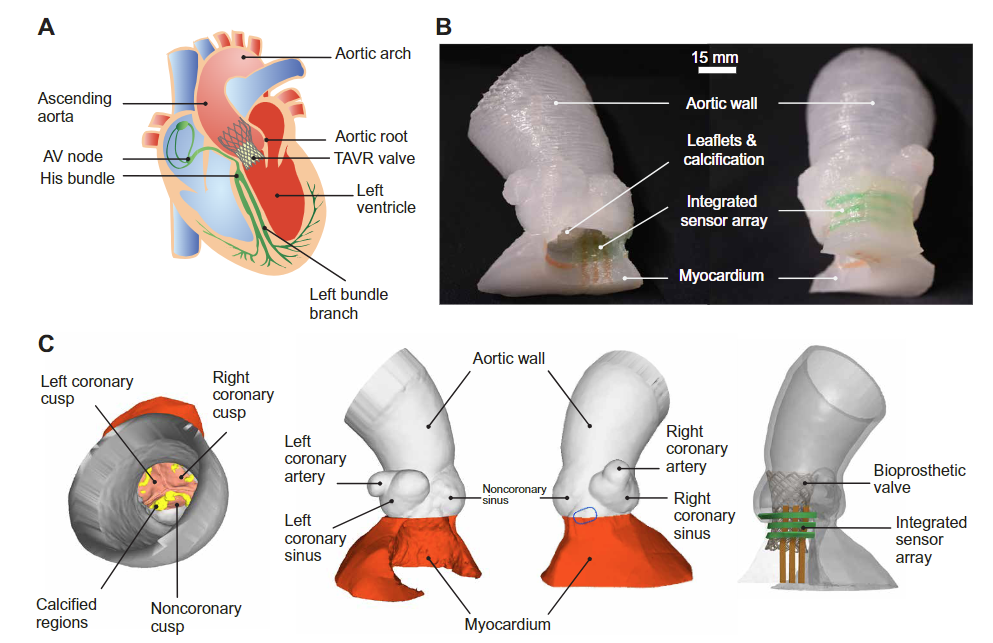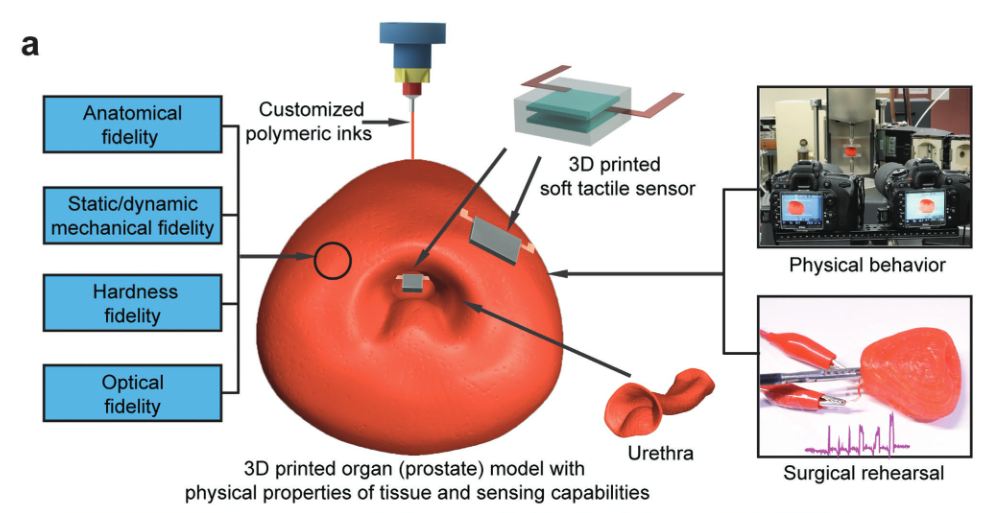3D printed organ models with integrated sensing capabilities
A method to 3D print patient-specific organ models with tissue-mimicking properties and integrated sensing capabilities.
Technology No. 20180012

1

2
IP Status: US Patent Issued; Patent No. 11,741,854
Working prototype. Prostate and aortic models have been successfully printed.
Applications
- Advanced surgical rehearsal and preoperative planning
- Organ behavior prediction
Technology Overview
Current 3D printed organ models are built using hard plastic and lack mimicry of the physical properties of real tissue. Important differences between tactile sensation and mechanical properties between hard plastic and tissue limit their application in preoperative planning and surgical rehearsal. Researchers at the University of Minnesota have developed a method to 3D print patient-specific organ models using soft silicone with realistic tissue-mimicking properties. These 3D printed models can also be equipped with integrated 3D printed sensors that collect quantitative feedback.
Phase of Development
TRL: 4-5Working prototype. Prostate and aortic models have been successfully printed.
Desired Partnerships
This technology is now available for:- License
- Sponsored research
- Co-development
Please contact our office to share your business’ needs and learn more.
Researchers
- Michael McAlpine Kuhrmeyer Family Chair Professor, Department of Mechanical Engineering
-
expand_more library_books References (2)
- Kaiyan Qiu, Zichen Zhao, Ghazaleh Haghiashtiani, Shuang-Zhuang Guo, Mingyu He, Ruitao Su, Zhijie Zhu, Didarul B. Bhuiyan, Paari Murugan, Fanben Meng, Sung Hyun Park, Chih-Chang Chu, Brenda M. Ogle, Daniel A. Saltzman, Badrinath R. Konety, Robert M. Sweet, Michael C. McAlpine (December 6, 2017), 3D Printed Organ Models with Physical Properties of Tissue and Integrated Sensors, Advanced Materials Technologies, 3, 1700235
- Ghazaleh Haghiashtiani, Kaiyan Qiu, Jorge D. Zhingre Sanchez, Zachary J. Fuenning, Priya Nair, Sarah E. Ahlberg, Paul A. Iaizzo, Michael C. McAlpine (August 28, 2020), 3D printed patient-specific aortic root models with internal sensors for minimally invasive applications, Science Advances, 6
-
expand_more cloud_download Supporting documents (1)Product brochure3D printed organ models with integrated sensing capabilities.pdf